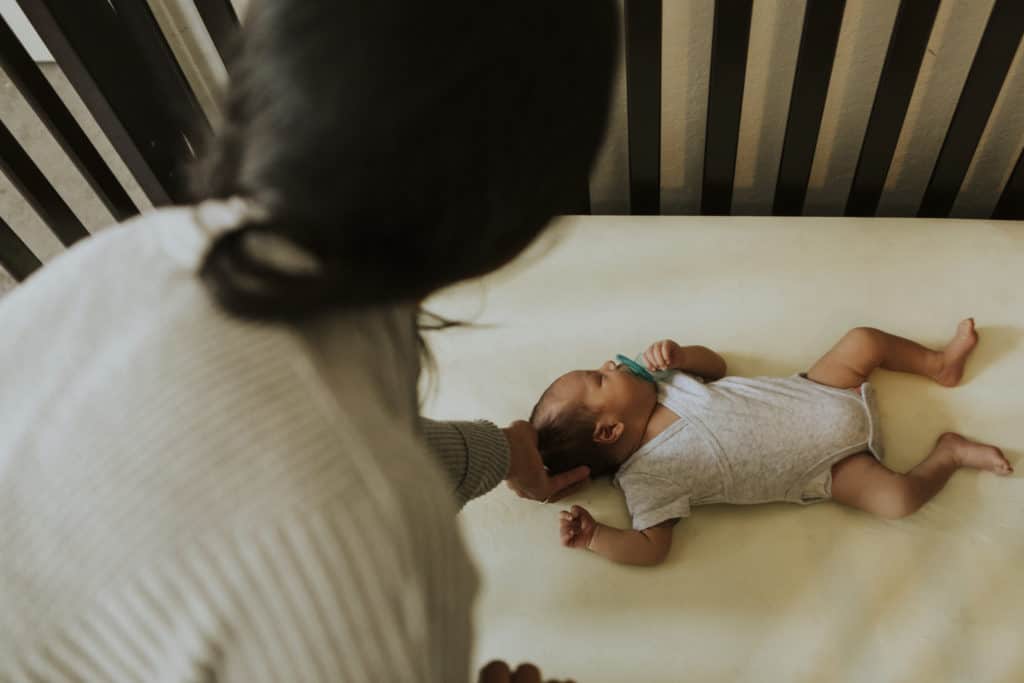One of the biggest questions the caregiver of an infant will ask themselves is “Where will the baby sleep?” It may seem like this question has an obvious answer, but many individuals find themselves straying from the crib. This is a dangerous yet overwhelmingly popular trend. As an individual cares for a child, that care becomes more casual and less cautious.
Caretakers find themselves placing the infant in their bed or drifting off to sleep with the child in their arms. This act is called co-sleeping and it can be dangerous for the child. Co-sleeping can also be defined as just having the infant sleep in the same room as you. While this is accepted and encouraged, sleeping in the same bed as the infant is not. Many doctors and medical professionals are now calling for the end of this type of co-sleeping.
Co-sleeping is not the only danger an infant can face in slumber. In 1992 the America Academy of Pediatrics recommended that all children under the age of one be placed on their backs to sleep. This change resulted in a 50% drop in Sudden Infant Death Syndrome and suffocation death cases. There are many complications that can happen while you think your infant is sleeping safe and sound.
Here are the 5 most important tips to ensure safe sleep for infants:
-
An infant should always be alone in a crib. This means no blankets, pillows, stuffed toys, animals, or crib bumpers. Bedding sets look wonderful, but they are very hazardous to the health and safety of your child. The crib should only contain a well-fitted crib sheet on a firm mattress and the child.
-
Instead of blankets, comforters, or sheets, consider using a sleep sack or sleeper blanket instead. This is a piece of clothing that goes over the infant’s night clothes. It allows the infant’s legs and torso to be warm and covered while reducing the risks of suffocation.
-
All infants should be placed on their backs to sleep. An infant on their side can easily roll over to their stomach and risk suffocation.
-
Do not fall asleep while holding an infant. Infants are cozy and we want to hold them as much as possible but we must remain alert. If you fall asleep as well, the infant may accidentally suffocate when their face becomes covered with a blanket or pillow.
-
It is also recommended that infants sleep in the same room but in a separate bed until they are at least 6 months old. This supervision helps keep infants safe and ensures that an adult is nearby in case of accidents or physical distress.
It can feel overwhelming and scary knowing that a simple thing like placing a blanket in a crib could be fatal. The key to keeping your infant safe lies in the simplicity of keeping interactions and surroundings minimal for the first few months of the infant’s life. When in doubt about the infant’s sleeping situation, remember your A, B, C’s. This acronym stands for alone, back, and crib.
You Could Work in Early Childhood Education
Do you love the idea of working with children in an educational setting? You can learn when and where you want with the CCC Early Childhood Education online program. The Community Care College ECE program features a robust curriculum including up-to-date teaching and learning processes all conveniently accessed online. We are also proud partners with the CDA. The CDA is the most widely recognized credential in early childhood education and is a key stepping stone on the path of career advancement in ECE.
From the desk of Shani Snell, Early Childhood Education Department Head and Instructor
For more information about our Early Childhood Education program, call 918.610.0027 or visit our website!









